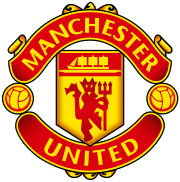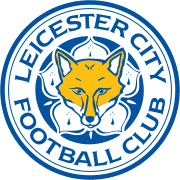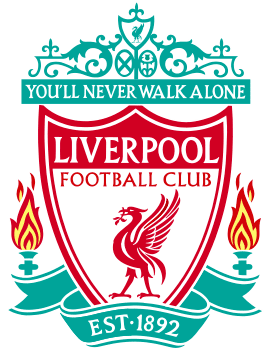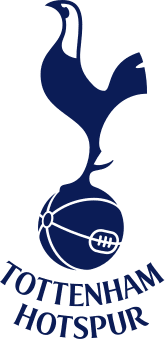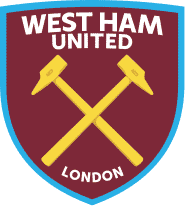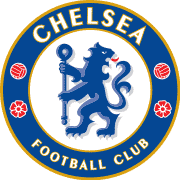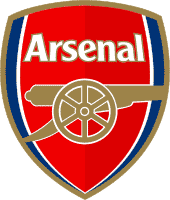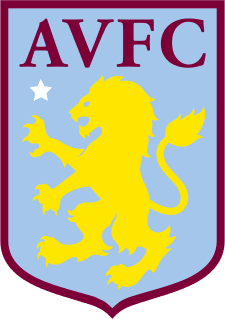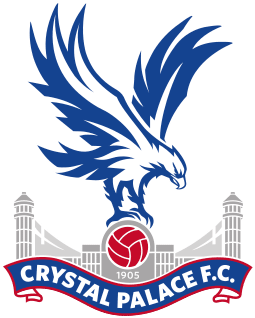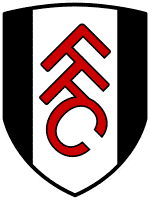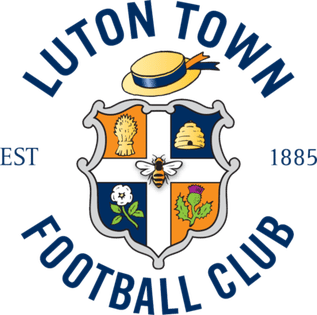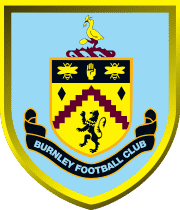Wolverhampton Wanderers FC Tryouts & Club Guide: History, Stadium, Players, and More!

Welcome!
Discover the world of soccer with fcscout.com, your go-to scout for club tryout information, club guides, player profiles, in-depth product reviews, and more. We’re dedicated to exploring and revealing the best in each domain, empowering you with knowledge to make informed choices.
Thank you for being here!
Hi, I’m Carlos! A coach, sports enthusiast, and the founder of FCScout.com.
I fell in love with the game at a very young age like many of you. I’ve been following and playing soccer for many years.
Throughout my career, I always enjoyed helping soccer players chase their dreams, which is why I started this website. I wanted to reach a larger audience outside of my local area and fcscout.com was born.
This website is a platform I will be using to update club pages on any tryouts, stadiums, players, tech, and more from clubs around the world. I also create free recruitment profiles for players looking to have that extra competitive edge when reaching out to clubs.
That’s it. That’s my pitch for you to stick around (or browse the site as you please).
This is already too much text for a “see more” drop-down button thing. If you want to reach out to me, head on over to my contact page 🙂

Wolverhampton Wanderers Football Club, commonly known as Wolves, is a professional association football club based in the city of Wolverhampton, England. The club currently competes in the Premier League, the highest level of English football.
Wolverhampton Wanderers FC Youth Development System
Wolverhampton Wanderers FC U-23
Wolverhampton Wanderers Under-23s are competing in Division 2 of the Premier League 2 during the current season, following relegation from the highest level after the previous season was curtailed and decided on a point-per-game basis. The team qualifies as an entrant in Premier League 2 by virtue of Wolves’s academy holding Category 1 status. Although the league is designed for players aged 23 and below, three overage players may also feature. Home games are primarily staged at Kidderminster Harriers’ Aggborough home.

Wolverhampton Wanderers FC U-18
To visit the U-18 website, please click here.
Wolverhampton Wanderers FC Academy
Find out how to join Wolves Academy with the information below.

How does recruitment work at Wolves Academy?
Wolves have a network of scouts who work for the club on a local, national and international basis. They look for players predominantly from under-6s to under-16s (the higher up the age groups, the less likely it becomes to be offered a trial – however it still is possible). Once they identify a player, they recommend them to the Academy recruitment department.
Do you run open trials, and how do I get a trial?
Wolves do run open trials. These events are always advertised with a Wolves contact email address on for example, test@wolves.co.uk. If it does not have a wolves.co.uk email address on the flyer, this is not an official open trial. To add, all open trials are held at the Wolves training ground.
We always watch players at their local clubs or schools before inviting them for a trial. Therefore, if you write in for a trial, you should always include a fixture list with kick-off times and venues for your team. You should also write a CV to tell us about your football background, including information such as date of birth, playing position, clubs previously played for and any representative honours such as those attained with school, district or county teams. Letters of reference and recommendation can help to support an application. We are only able to trial players with an EU passport or those who have ‘leave to remain’ documentation.
How do I know if a scout has been to watch me?
Unfortunately, you may never know. However, our scouts are always in club kit. You will only know if we make contact via your current club – we will always approach your coach or manager before contacting a player’s parents.
What are we looking for?
Quite simply; talent. We understand that players come in all shapes and sizes, with a variety of strengths and weaknesses. We consider a player’s technical, tactical, physical, psychological and social attributes, as well as looking at relative age effect and maturation rates. We also must compare them to players currently in the Academy to assess whether a target player has the potential (we understand this may take time) to be better than the players we already have registered. We also have to take into consideration the effect on the child if they are sent for an Academy trial and are not ready, this could be a negative experience for them.
I keep contacting clubs, but never seem to get invited in. What can I do to get scouted?
Football is a hugely competitive profession in which to ‘make it’. Obviously, talent is required, but it takes real resilience and determination to be successful in the game. Some people are noticed early on, and others develop later, so keep working hard, and keep emailing clubs at a variety of levels.
The higher the level you are currently playing at, the more likely you are to be noticed, so even if you don’t get a trial at Wolves, look to move up the leagues at whatever level you can. Don’t lose heart, and however far you get, do it for the enjoyment of the game – professional recognition is an obvious bonus, but a love of the game will give you satisfaction whatever the outcome!
Please email your information to:
tommaydew@wolves.co.uk if aged between 12-16 and live within 90 minutes of Wolverhampton.
jackmaydew@wolves.co.uk if aged between 6-11 and live within 90 minutes of Wolverhampton.
harryhooman@wolves.co.uk if aged between 12-16 and live outside of 90 minutes of Wolverhampton.
Please remember, we get hundreds of trial applications each week, so are not able to respond to emails, and we cannot watch everyone. If you do not receive an email back unfortunately it is unsuccessful at this moment in time.
False advertising of trials
The club has previously been the subject of false advertising of trials by unauthorised companies. We are aware that some people have received letters and/or email correspondence purportedly offering them trials at the club’s Academy in exchange for the payment of a fee. Please note, these letters and email correspondence are fraudulent and have not been sent by the club. We are working with the relevant authorities to try and stop this. The club does not charge trialists a fee.
If you have any questions, or would like to discuss any correspondence that appears to have been sent to you by the club in relation to trials at the Academy, please contact Harry Hooman on harryhooman@wolves.co.uk.
For more information on the Academy, please click here.
EXPLORE MORE CLUBS!
Explore more professional clubs by continent.
Wolverhampton History
In 1888, the club was one of the first participants in the formation of the Football League. It was under the supervision of Stan Cullis that the team won the English League three times during the 26 straight seasons that it spent in the top flight between 1932 and 1965. The years 1953–54, 1957–58, and 1958–59 were the years when the team won the title. In addition, Wolves finished in second place in the English league in five other seasons between the years 1937–38 and 1959–60.
The most recent of Wolves’ four FA Cup victories came in 1960, and the club has also placed second in the competition on four other occasions. Additionally, the club has been victorious in the League Cup on two separate occasions, namely in 1974 and 1980, and it has finished first in all four of England’s professional divisions.

After becoming one of the first clubs in the United Kingdom to install floodlights, Wolverhampton Wanderers organized televised “floodlit friendlies” against leading club sides from other countries between the years 1953 and 1956. These games played a significant role in the establishment of the European Cup, which is now known as the UEFA Champions League. Wolves played their way into the quarterfinals of the competition in the 1959–60 season, as well as the semifinals of the European Cup Winners Cup in the 1960–61 season, and the inaugural UEFA Cup Final in the 1972 season. After being absent from European play for the previous 39 years, they made it to the quarterfinals of the UEFA Europa League in the year 2020. The traditional uniform of the Wolves is comprised of black shorts, black socks, and ancient gold shirts. Since 1979, the “wolf’s head” insignia of the club has been included on the kit as well. There are long-standing rivalries with other clubs in the West Midlands, the most important of which being the Black Country derby, which is played against West Bromwich Albion. The two clubs competed against one another for the first time since the 2011–12 season during the 2020–21 campaign. The Premier League match between the two teams took place on January 16, 2021, nearly nine years after their last encounter on February 12, 2012.
Stadium
Molineux, located in the Whitmore Reans neighborhood of the city, has served as the club’s permanent home ever since it was transferred there in the summer of 1889. The name of the stadium comes from the Molineux House, which was constructed in the region in the 18th century by Benjamin Molineux, a local merchant. Subsequently, the grounds of the Molineux House were enlarged to incorporate a large number of public recreational amenities. When the Northampton Brewery Company purchased these grounds in the year 1889, they rented its usage to the city’s football team, who at the time were looking for a home that was more suited for a Football League member. On September 7, 1889, following the completion of the site’s renovation, the first ever official game was played in front of a crowd of 4,000 people. Although the stadium had the capacity to hold 20,000 spectators, English football crowds in the 19th century rarely reached that amount.

After purchasing the freehold in 1923, the Wolves immediately undertook a series of ground modifications under the aegis of Archibald Leitch. These improvements began with the erection of a significant grandstand on the Waterloo Road side of the stadium. The club also constructed a new stand on the Molineux Street side in 1932, and then two years later, they added a roof to the South Bank; this South Bank was historically the second largest of all Kop ends in the country, and it routinely held audiences that were in excess of 30,000 people.
The stadium at last had four stands that were fully functional, which would serve as its foundation for the subsequent fifty years. In the days before seating limitations, the stadium had the capacity to host over 60,000 spectators; nonetheless, the record attendance for a First Division match was 61,315 people, which took place on February 11, 1939 versus Liverpool. The club was at its most successful on the field throughout the 1940s and 1950s, which coincided with the highest average attendance for a season being over 40,000. Molineux was one of the first facilities in the United Kingdom to get floodlights during this time period, which allowed it to play home to a number of midweek friendlies against clubs from all over the world. In the days before the European Cup and other international club championships were established, games like these held a great deal of prestige, drew large audiences, and garnered a lot of interest; in fact, the BBC frequently broadcasted games like these on television.
As a result of the Molineux Street Stand’s inability to conform to the newly enacted safety regulations, the club started construction on a brand new stand to replace the existing one just behind it on land where homes had previously been removed. The construction of this brand-new stand with seats, which was finished in 1979 and given the name John Ireland Stand in honor of the club president at the time, was the first stage of a plan to renovate the entire stadium. The club is now in a precarious financial position as a direct result of the cost of the Ireland Stand rising to more than two million dollars. As a direct consequence of this, it was compelled to go into receivership in the year 1982.
The John Ireland Stand and the South Bank terrace were the only sections of the stadium that were still in use when the team was relegated to the Fourth Division in 1986. After the fire that occurred at the Bradford City stadium, new safety regulations were put into place, and as a result, the now-dilapidated North Bank Stand as well as the Waterloo Road Stand had to be closed. The club did not have the requisite means to reconstruct them at the time.

Following Sir Jack Hayward’s ownership of the club in 1990, a total of £8.5 million in funding was made available in order to carry out an extensive redevelopment of Molineux. Between August 1991 and December 1993, three sides of the stadium were completely rebuilt to form an all-seater stadium with a capacity of 28,525 people that complied with the Taylor Report.
The Waterloo Road Stand was replaced by the Billy Wright Stand, the North Bank terrace was replaced by the Stan Cullis Stand, and the South Bank terrace was replaced by the Sir Jack Hayward Stand (named the Jack Harris Stand until 2015). This renovation served as the stadium for almost twenty years prior to the erection of a temporary seating area in the southwest corner that was used during Wolves’ seasons in the Premier League. In 2010, blueprints were made public for a significant renovation program that was intended to create new facilities and increase the capacity of existing ones.
The initial phase of this project consisted of making a new two-tier Stan Cullis Stand fully operational for the 2012–13 season. This brought the total number of authorized seats in the arena up to 31,700. The second stage of the stadium’s redevelopment was supposed to involve rebuilding the stadium’s oldest stand, which was originally called the John Ireland Stand and was later renamed the Steve Bull Stand in 2003. The goal of this stage was to increase the stadium’s capacity to approximately 36,000 spectators, but the project was scrapped when it became likely that the club would be demoted from the Premier League in 2012.

Following Fosun’s takeover of the club in 2016, redevelopments of the stadium were once again added to the list of priorities for the organization. In contrast to previously rumored plans, it was publicly revealed in February 2019 that future plans consisting of the demolition and full rebuild of the Steve Bull Stand, followed by the redevelopment of the Sir Jack Hayward Stand, to raise the stadium capacity to 45-46,000 were actively being considered. These plans would bring the total number of spectators who can fit inside the stadium to 45-46,000. However, in 2020 the club unveiled plans that were more modest for making gradual renovations to the stadium. This was done because the club wants to keep its distinctive personality and be able to prioritize investments in the playing side of the club.
Crest
The historic colors of the club, gold and black, are an allusion to the motto of the city council, which reads “from of darkness cometh light.” The two colors, which signify light and darkness, respectively, were chosen for the club. Although the team’s first colors were red and white when it was formed, which were taken from the school colors of St. Lukes, the team’s home colors have been their distinctive old gold shirts with black shorts for the majority of their history. The team’s original colors were red and white when it was formed.

In the early decades of the club, a number of different shirt designs employing these colors were made. Some of these patterns included stripes and diagonal halves. However, beginning in the 1930s, the club has consistently used a plain shirt design. Before the 1960s, the club’s color was a darker shade of gold that was known as “old gold.” Even today, “old gold” is frequently referred to in the media as the club’s color. In the early days of the team, their shirts did not typically carry a badge unless it was a particularly significant event, such as a cup final. This is typical of most English teams. The coat of arms of Wolverhampton City Council was the first of these badges to be worn on Wolves jerseys when they were initially introduced. The Wolves began wearing their own club emblem, which consisted of a single leaping wolf, on their shirts in the late 1960s. In the middle of the 1970s, the badge was changed to include three leaping wolves instead of a single one. Since 1979, the emblem has had only a single iteration of a “wolf head” design; the current badge underwent its most recent makeover in 2002.

In May of 2019, the club prevailed in a legal challenge brought by Peter Davies, a retired building industry manager who is 71 years old. Davies claimed that he sketched the wolf head motif while he was a schoolboy in the 1960s and submitted it to an art competition. The club won the case. Mr. Davies claimed that he came up with the angular design after being challenged by a teacher to demonstrate an understanding of Blaise Pascal’s Hexagrammum Mysticum Theorem. He then entered the design in an art competition that was promoted in the newspaper Express and Star.
Mr. Davies had asserted a claim to the copyright and was seeking compensation. Mr. Davies was unsuccessful in his allegation of copyright infringement, and as a result, he is now responsible for paying legal expenses and charges estimated at around £450,000. The traditional colors worn by the Wolves when they play away from home are pure white; however, in recent decades, the team has played in a variety of colors, including black, blue, teal, purple, and maroon.
Ownership
The Chinese multinational corporation Fosun International is the current owner of the club. On July 21, 2016, Fosun International purchased the club’s parent company, W.W. (1990) Ltd., from the former owner, Steve Morgan, and Morgan’s company, Bridgemere Group, for a reported price of £45 million. A pre-tax profit of little under £20 million was recorded in the most recent set of accounts that were issued by the group parent company of Wolves (covering the 2018–19 Premier League season), while the firm’s turnover for the year was equivalent to £172.5 million. The total amount that was spent on personnel salary and expenditures was 92.1 million pounds.

Shirt sponsorship deals are an important source of revenue for the team, as is the case with the vast majority of football clubs. The following companies have provided shirt sponsorship in the past: Tatung (1982–1986), Benjamin Perry (1986), Staw Distribution (1986–1988), Manders Paint & Ink (1988–1990), Goodyear (1990–2002), Doritos (2002–2004), Chaucer Consulting (2004–2009), Sportingbet (2009–2013), What House? (2013–2015), Silverbug (2015–16), The Money Shop (2016–2018), and W88 (2018–2019). The betting website ManBetX, with whom the team is currently affiliated and which signed a sponsorship arrangement described as “long term” in June 2019, is the club’s current sponsor.
The almost four-year hunt for a new buyer came to an end when Fosun purchased Wolves from Steve Morgan, who had seized ownership of the club in August 2007 for a nominal price of £10 with the caveat that £30 million was poured into the club. This brought an end to the search. Morgan was the general manager of the club for nine full seasons before he put it up for sale in September 2015 to look for new owners. Morgan had purchased the club from Sir Jack Hayward, a supporter of the team for his entire life. Hayward was the previous owner of the club, having purchased it for £2.1 million in 1990. During the 17 years that Sir Jack was in charge of the club, he spent an estimated fifty million pounds of his personal wealth to redevelop the club’s stadium and fund the acquisition of new players. Despite this increase in spending power, the team was only able to complete one season in the premier division during his tenure.
After a tumultuous decade in the 1980s, during which the club was twice declared bankrupt, Hayward’s takeover resulted in a significant improvement in the club’s financial condition. In 1982, two Saudi brothers named Mahmud and Mohammad Bhatti purchased the club as part of their company Allied Properties. This “saved” the club from going bankrupt and prevented it from being liquidated. However, because they did not invest a sufficient amount of money in the club, it was subjected to a number of orders to have it dissolved and suffered a series of relegations down the football leagues.
In 1986, the official receiver was called in for a second time, and a deal was eventually brokered for Wolverhampton City Council to purchase the club’s stadium for £1.12 million, along with the surrounding land. At the same time, a local developer, Gallagher Estates, in conjunction with the Asda supermarket chain, agreed to pay off the club’s outstanding debts in exchange for the building of an Asda superstore on land adjacent to the stadium.







